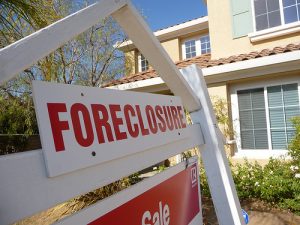
Mortgage debt can be a burden to many senior homeowners because they may have less income at this stage in their life due to retirement, working part time or leaving the work force for health reasons. In addition to day-to-day living expenses, a mortgage can overwhelm the monthly budget.
Carrying a mortgage into retirement often means that senior homeowners have less equity in their homes and may have less accumulated net wealth. From 2001 to 2011, the CFPB found that homeowner’s aged 65 and older who are carrying mortgage debt increased from 22 to 30 percent. Homeowners age 75 and older had the largest increase from 8.4 percent to 21.2 percent during the same period.
Not only are senior homeowners carrying more debt, but they are struggling to afford that debt. From 2007 to 2011, foreclosure rates for homeowners age 65 to 74 increased from 0.25 percent to 2.55 percent. Foreclosure during the senior years is often more debilitating than during other times of life because getting out of debt can be more difficult.
Inability to return to work or find well-paying jobs can make repaying debt especially unmanageable. Foreclosure rates have decreased since 2012, but the statistics prove how fragile senior American homeowner’s financial situations really are.
The CFPB reports several factors that are contributing to this trend. The refinancing boom of the early 2000’s, Americans purchasing their first home later in life, providing small down payments when they purchased homes, and borrowing against their home’s equity to afford other expenses all contributed to increased mortgage debt among older Americans.
Older homeowners owe more on their mortgage now in relation to the value of their home than they did a decade ago. From 2001 to 2011, the debt to value ratio increased from 30 percent to 46 percent. The amount senior homeowners owe is significantly more as well. During this same time period, the amount senior homeowners owed jumped from $43,400 to $79,000, an increase of 82 percent.
If you or someone you know is struggling with mortgage payments or are making mortgage payments at the cost of other expenses, you may be eligible for another financial option. A reverse mortgage loan is available for senior homeowners who are at least 62 years old. They can tap into the equity in their home to completely pay off their current mortgage as well as receive monthly payments, a line of credit, or a lump sum payment.
The homeowner still holds the title to the property and must continue to pay property taxes, insurance and must maintain the property for as long as they live in the home. After the homeowner moves out or passes away, the loan becomes due and is most often repaid by the sale of the home.
Reverse mortgage loans are not available for every senior homeowner. To see if you and your property meet the eligibility requirements, call a reverse mortgage adviser at 800.976.6211 for more information.
